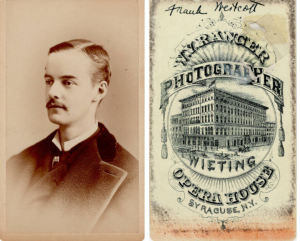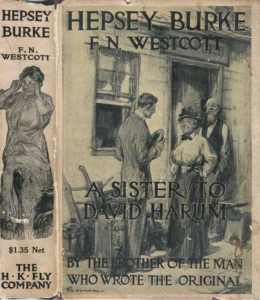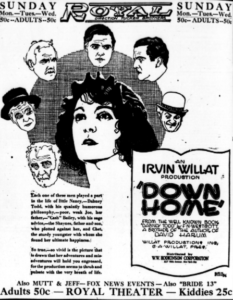
Portrait of Frank Noyes Westcott on a photocard by N.V. Ranger’s studio, Syracuse, New York; from the SSWDA Collection
Frank Nash Westcott was born on August 11, 1858 in Syracuse, New York, the son of Dr. Amos Westcott and Harriet Nash. He was the half-brother of Edward Noyes Westcott, the author of the popular novel David Harum, The Story of an American Life. Frank was a descendant of Stukely and Juliana Westcott in the eighth generation (Frank Nash Westcott8, Amos7, Gorton6, Reuben5, Amos4, William3, Jeremiah2, Stukely1).
Frank received his Ph.B. at Syracuse University in 1878, and then studied at the Berkeley Divinity School at Yale University. He was ordained a deacon in the Episcopal church in 1883. In the following year he was ordained to the priesthood and served in a mission church in Syracuse for a year. He then became Rector of St. James in Skaneateles, New York. He remained there until 1913, when he was called to Milwaukee to be the coadjutor to Bishop Walter Webb.
Frank Nash Westcott and his father Amos were both prolific writers, defining and promoting their respective callings: Amos wrote numerous scientific articles about dental medicine, and Frank authored tracts on religion and the Episcopal Church. His Catholic Principles, As Illustrated in the Doctrine, History, and Organization of the American Catholic Church in the United States Commonly Called the Protestant Episcopal Church, published in 1902, was used as a standard work in many divinity schools. He also wrote Philosophy of a Change in the Name of the Church (1898), Heart of Catholicity (1905), and The Church and the Good Samaritan (1905), which was based on his year of ministry in the mission church in Syracuse.
But tragically Frank also shared his father’s life-ending anxiety and despair despite having achieved success and recognition. When Frank was 16 years old, Dr. Amos Westcott, frustrated with ill health and declining energy, shot himself. He was 58. Similarly, after moving to Milwaukee Frank was in ill health, including nervous trouble and sleeplessness, and injuries from a fall. On June 27, 1915, Frank Nash Westcott hung himself in a Milwaukee Hospital. He was 56. Roscoe Whitman gives this account of the suicide:
His ability was such that another diocese had unofficially determined to make him its bishop. A delegation of laymen and clergy went to Milwaukee to call on him. They were ushered into his room and found him hanging by the neck to his bedpost. Had he delayed his suicide a short time, high honors would have come to him (“Tragedies and Hoax of Some Westcotts,” 1945).

Cover and spine of Frank Westcott’s first work of fiction, Hepsey Burke, published in 1914.
Frank Nash Westcott also gained some fame with two novels, in part because he exhibited the same storytelling skill and command of local color that brother Edward Noyes Westcott demonstrated with his widely popular David Harum. In fact, Frank drew a direct line to David Harum when he (or his publisher) subtitled Hepsey Burke (his first novel, published in 1914) “The Sister to David Harum,” and the cover of Dabney Todd (published posthumously in 1916) announces that Dabney is “A Blood Relation to David Harum and Hepsey Burke.” Both books were “Written by the Brother of the Man that Wrote the Original.”
Frank’s writing achieved wide acceptance, not just in divinity schools, but also in popular culture with many stories, plays and movies (such as the 1920 silent movie Down Home) based on the characters in Hepsey Burke and Dabney Todd, taking advantage of brother Edward’s David Harum “franchise.”
Unfortunately, neither Frank nor Edward lived to see the full impact of their fiction.

Frank Westcott’s posthumous reach included the 1920 silent film Down Home, which featured “characters from the well known book Dabney Todd by F.N. Westcott, a brother of the Author of David Harum.”
Sources: Betty Acker, “Rev. Frank Nash Westcott, 1858-1915” (2000); Richard Case, “The Westcotts and David Harum” (1973); Findagrave.com; Wikimedia.org; Roscoe Whitman, “Tragedies and Hoax of Some Westcotts” (1945).
